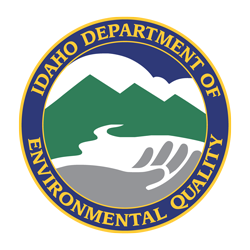Underground storage tank (UST) facility owners must designate Class A and Class B operators and notify DEQ within 30 days of the designation. The designated operator must be trained within 30 days of assuming the responsibilities. Emergency response procedure signage must be posted at unattended facilities that allow self-service fueling.
UST rules (IDAPA 58.01.07) specify three classes of operators that need training for each regulated facility:
- Class A—Individuals with primary responsibility for on-site operation and maintenance of the UST system (e.g., owner). They do not need to be on site.
- Class B—Individuals with daily on-site responsibility for the operation and maintenance of the UST systems (e.g., operator/manager). They do not need to be on site at all times.
- Class C—Daily on-site individual(s) with first response responsibilities for addressing emergencies presented by a spill or release from the UST system (e.g., cashier/clerk).
In some instances, the same person may be the Class A, Class B, and Class C operator.
All trained operators must be recorded on a trained operator list that is kept at the facility.
This accordion will not appear on the screen
DEQ’s TankHelper training consists of general UST information and site-specific education identifying the equipment installed at the facility and the regulatory function of the components.
The online TankHelper provides site-specific Class A and B operator training and is free for operators with UST facilities in Idaho. This training is for Class A and/or B operators who work for Idaho facilities only.
TankHelper guides the operator through a series of training modules specific to their location and provides a site-specific management plan for their UST facility. After reviewing the management plan, the operator takes a quiz and receives a certificate upon passing. The operator is then registered with DEQ as a trained operator for that facility.
After completing TankHelper, the operator should know how to detect and prevent releases from the facility. By following the site-specific management plan and properly using the compliance binder, the operator will be in compliance with state and federal UST requirements.
Each Idaho UST facility receives a management plan with site-specific requirements:
- The equipment present at the facility
- The required duties associated with that equipment
- When the required duties need to be performed
- Recordkeeping requirements
- Best management practices
- How to respond to problems
Each new facility will also receive a compliance binder that details how their equipment functions to meet compliance. The compliance binder serves as reference material and a place to store the facility’s required records.
Class A operators must be trained in general UST system requirements to make informed decisions regarding compliance and ensure appropriate individuals are fulfilling operation, maintenance, and recordkeeping requirements.
DEQ offers a free online Class A and B operator training program called TankHelper available to Idaho UST owners and operators.
Class B operators must be trained and obtain more understanding of equipment and on-site operational requirements of the regulations.
DEQ offers a free online Class A and B operator training program called TankHelper available to Idaho UST owners and operators.
Class C operators must be trained to respond to emergencies and alarms before their first shift of responsibility. Class C operator training consists of the Class A or B operators’ instruction of the emergency response and shutoff procedures for the facility:
- Locating emergency shutoff switches
- Locating alarms
- Contact procedures during an emergency
The Class A or B operator must provide the Class C operator with an instruction sheet and emergency contact phone numbers before the operator assumes emergency response responsibilities.
Quick Links
Resources
This accordion will not appear on the screen
UST/LUST Compliance Analyst

